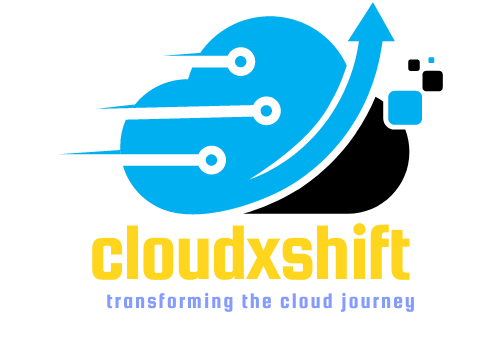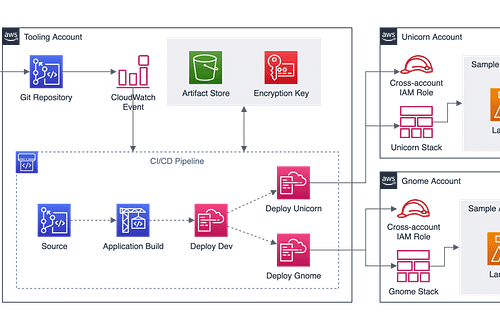-
Enhancing AWS Security: IDS/IPS Implementation
Introduction In today’s digital landscape, where security threats are ever-present, ensuring the protection of your AWS infrastructure is crucial. One key component of AWS security is Intrusion Detection and Prevention Systems (IDS/IPS). This article provides a comprehensive guide to understanding and implementing IDS/IPS on AWS. We will explore the importance of AWS security, the basics of IDS and IPS, the benefits they offer, and the native and third-party solutions available. Additionally, we will reference the insightful article by Jayendra Patil for further information. 1.1. Importance of AWS security The importance of AWS security cannot be overstated. With businesses relying heavily on cloud infrastructure, securing data, applications, and resources has become…
-
The ultimate guide to cloud migration: benefits, challenges
Introduction Benefits of Cloud Migration Challenges of Cloud Migration Impact of Unsolved Problems on Cloud Migration Cloud Migration Process for Small Enterprises Conclusion Introduction Cloud migration has become increasingly popular among businesses of all sizes due to the many benefits it offers. Migrating to the cloud can help reduce costs, improve scalability and flexibility, and enhance security. However, the process of migrating to the cloud can also be complex and challenging, especially for small enterprises with limited resources. In this article, we will explore the benefits, challenges, and best practices of cloud migration, as well as the impact of unsolved problems on cloud migration. We will also provide a step-by-step…
-
AWS EC2 Unleashing the Power of Amazon Elastic Compute
AWS EC2 is a web service that provides resizable compute capacity in the cloud. AWS EC2 instances are virtual servers that can be used to deploy and run applications on the cloud. EC2 instances can be launched from pre-configured Amazon Machine Images (AMIs) or custom AMIs created by users. EC2 instances can be created and terminated on demand, allowing users to scale their applications up or down as needed. If you’re looking for a powerful and flexible cloud computing solution, look no further than Amazon Web Services Elastic Cloud Compute, or EC2 for short. With its vast array of features and capabilities, EC2 is at the forefront of cloud computing…
-
AWS IAM Policies: Best Practices
Introduction: IAM policies are a fundamental component of AWS IAM (Identity and Access Management). They define permissions and access levels for users, groups, and roles, allowing you to manage access to your AWS resources securely. In this article, we will delve into IAM policies and discuss their importance in securing your AWS infrastructure. IAM Policies: IAM policies are JSON documents that define permissions for IAM users, groups, and roles. Policies are attached to identities and specify which AWS resources the identity can access and what actions they can perform. IAM policies are highly customizable, allowing you to set granular permissions based on your organizational needs. IAM policies are divided into…
-
AWS Identity and Access managment
AWS Identity and Access Management (IAM) is a powerful and flexible service that provides secure access to AWS resources. IAM enables you to manage users, groups, roles, and permissions to securely control access to your AWS resources. In this article, we will discuss the various features of IAM and how to use them effectively. IAM Features: IAM has several features that allow you to manage access to AWS resources securely. These features include: Centralized Control: IAM enables you to manage access to AWS resources from a single location. You can control access to AWS services and resources for your entire organization, and you can set permissions based on your organizational…
-
Future of DevOps: Tools That Will Bring Change
DevOps is a software development strategy that incorporates agile practices for fast, efficient product creation and release. It focuses on integration of development and operations teams, continuous integration/continuous delivery (CI/CD) and automation of tasks and processes. The objective is increase the rate of changes to production in efficient manner which will help the businesses to release new features as per business demands. Typically, DevOps teams use pipelines to streamline and standardize processes. DevOps pipelines are toolchains that teams can use to automate tasks and provide visibility into the software development life cycle. In this article, we’ll cover seven popular open source CI/CD tools. How DevOps Will Change in the Near…
-
Building Secure Immutable Infrastructure
Introduction Building a secure AWS environment has many layers – the AWS account access and resource privileges, keeping inventory of the instances, and managing application configuration. This is of course not a one-time effort but a continuous process – the ability to review AWS recourses and access, the ability to check for installed software and unpatched instances, the ability to check who had access to configuration properties. A separate whitepaper has been released that addresses all these topics. Taking an Infrastructure as Code (IaC) approach, where the whole infrastructure (AWS resources and access) is treated as code under version control provides full visibility and makes every change traceable and auditable.…
-
What is cloud migration?
Cloud migration is the process of moving digital business operations into the cloud. Cloud migration is sort of like a physical move, except it involves moving data, applications, and IT processes from some data centers to other data centers, instead of packing up and moving physical goods. Much like a move from a smaller office to a larger one, cloud migration requires quite a lot of preparation and advance work, but usually it ends up being worth the effort, resulting in cost savings and greater flexibility. Most often, “cloud migration” describes the move from on-premises or legacy infrastructure to the cloud. However, the term can also apply to a migration from…


























